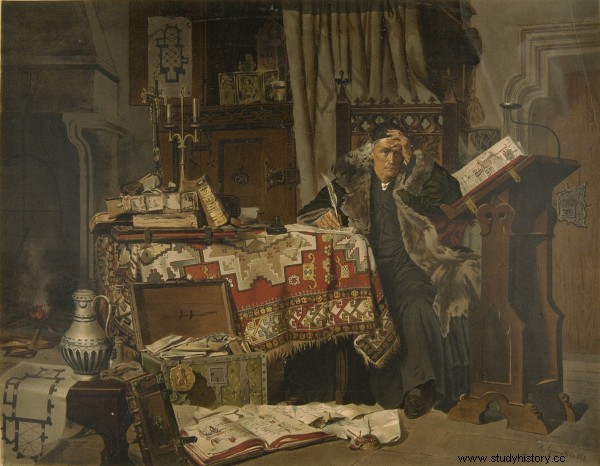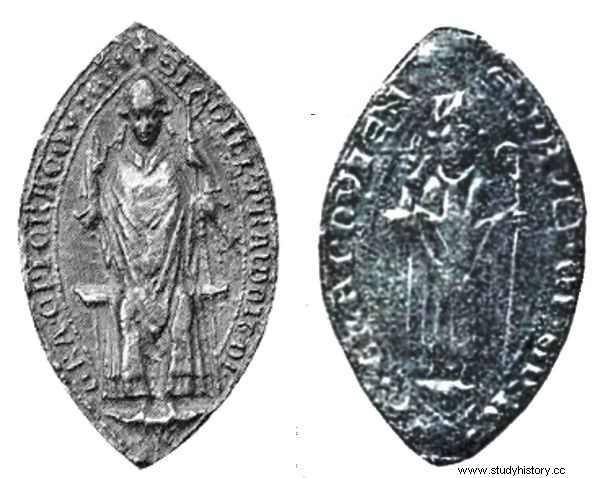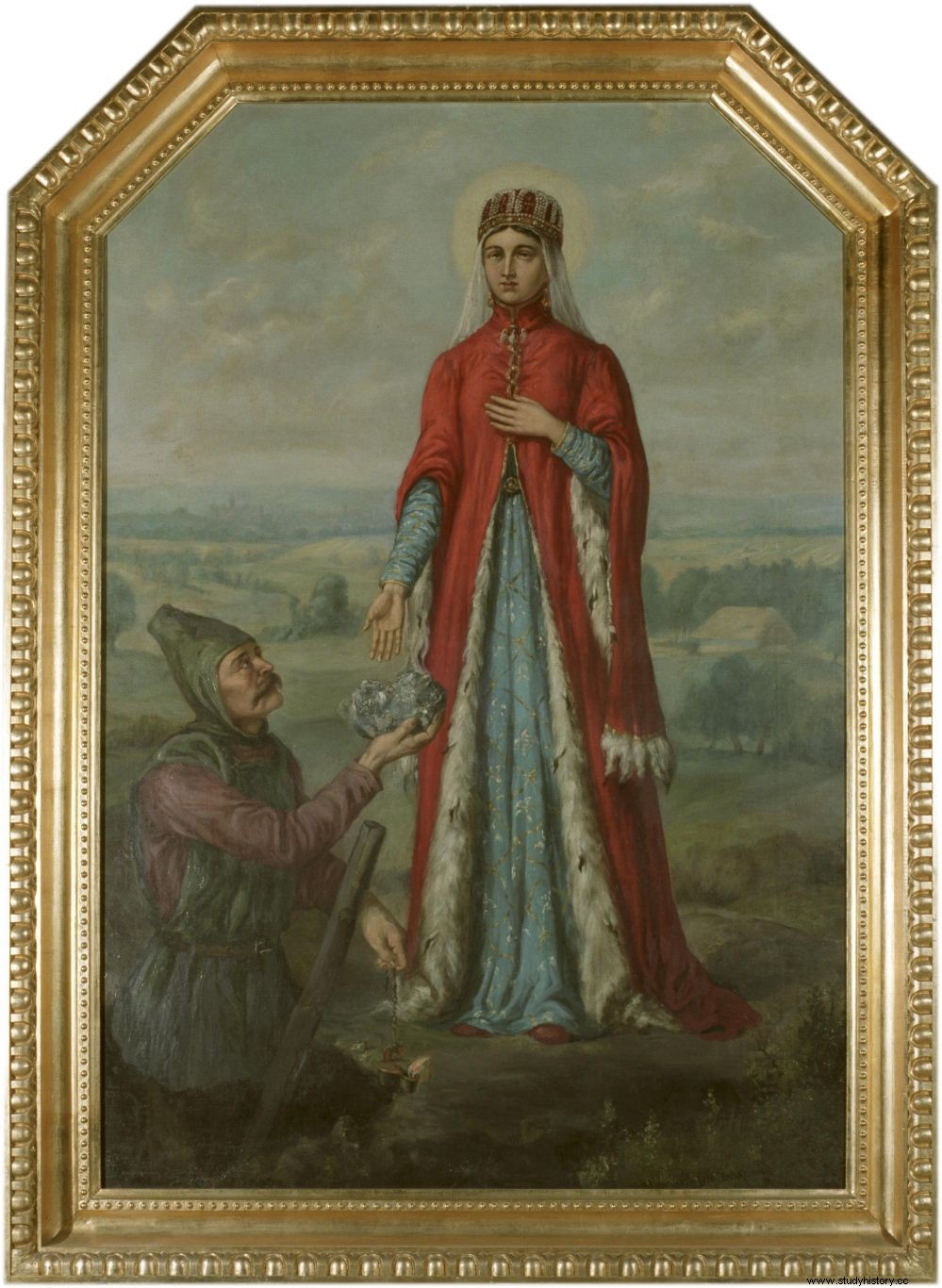It was said that women were his passion. Apparently, he kept the entire harem at his court, and the nun, who did not want to succumb to him, simply kidnapped. He didn't even back away from the murder! But is it really? It's time to take a closer look at the black legend of the Polish priest.
Following Paweł of Przemanek, the chancellor of Bolesław V the Chaste and the bishop of Kraków in the years 1266-1292, the bad opinion lasts from the 15th century. We can read about his morbid interest in the fair sex in Katalog bishops Krakowskie . The incriminating fragment is a later supplement to an entry devoted to Paul from the 13th century. A source containing similar revelations is Lives bishops Krakowskie Jan Długosz. You can find even more spicy details in them.
The Bishop… and his women
Over the years, many historians have been uncritical about the information provided by Długosz. To this day, the same accusations are circulating in journalism: that he committed adultery, and that he kept a harem .... According to them, Paweł was even surrounded by women. On this basis, for example, Aleksander Przeździecki or Jan Ptaśnik formulated their negative opinions about the bishop. They were also repeated by Paweł Jasienica.

Rumors about the debauchery and crimes of Bishop Paweł of Przemanków were passed on, among others, in the 15th-century chronicle by Jan Długosz, here in a painting by Antoni Gramatyk (source:public domain).
Meanwhile, it does not appear from earlier reports that Paweł from Przemankowo led a particularly dissolute life. The black legend is already undermined by his promotion to the episcopal see. As one of the bishop's biographers, Father Władysław Karasiewicz, emphasized, the selection was made by the canons, most of whom were nominated by Paweł's predecessor, bishop Jan Prandota, who was virtuous and saintly. So they were certainly people with similar values. Could it be that a thoroughly broken person could count on their favor?
At least as suspicious seems to be the fact that the decision of the chapter did not raise the objections of the Gniezno Archbishop Janusz, who soon approved the election. As if that were not enough, the positive image of the bishop-elect is also confirmed by the Yearbook capitular Krakow . We read in it that during the synod of Wrocław, which took place in February 1267, Paweł was especially honored by the papal legate, Gwidon.
Some, such as professor Tadeusz Silnicki, a specialist in the organization of the medieval Polish Church, argued that it could have happened a few months later, during Gwidon's visit to Krakow. The fact remains, however, that Paweł received a warm welcome from the legate.
Meanwhile, the Burgundian dignitary himself was characterized by Silnicki as a man of rules and struggle than concessions and compromise, which showed the direction of more ecclesiastical rather than political, returned (...) towards ideals, reforms and the spiritual sphere . In addition, he was to be endowed with underdogs with virtues , deep know and zeal w filling responsibilities . Someone like that would not be sympathetic to a debaucher, a booty and an adulterer ...
A lover in a habit?
A matter that remains to be clarified is directly related to the sexual excesses accused of Paul. The case concerns a nun from the convent of Poor Clares in Skala. The pretty nun was said to have liked the bishop so much that without a second thought he kidnapped her, dragged her to the bedside and disgraced her there.
This story seemed uncertain to Długosz himself. Because it is difficult to take it seriously. Suffice it to recall that in the dispute over the Nowy Sącz-Biecko-Korczyński dominion, which took place between Prince Leszek Czarny and the Poor Clares and Princess Kinga, Bishop Paweł was on the side of the latter. The relentless attitude of the clergyman was broken only after his imprisonment. Is it possible that, with such a firm defense of Poor Clares, he could simultaneously do similar numbers to his protégés?

The canons nominated by Jan Prandot, whose seal is visible on the left, did not mind the appointment of Paweł (seal on the right) to the position of the bishop of Krakow. Would they support a person known for his debauched lifestyle? (source:public domain).
We can also deduce that nothing similar happened from the 14th-century life of Princess Kinga, entitled "Vita et miracula sanctae Kyngae ducissae Cracoviensis". The author of this little book, as Barbara Kowalska guesses, was most likely the confessor of the Poor Clares. So he drew knowledge directly from their accounts. The image of the bishop he paints is very positive.
In Kinga's biography, Paweł appears as a good-natured man, supporting the duchess who was harmed by Leszek Czarny and her co-religious . Paweł even experienced a miracle through the intercession of Kinga ... twice! The first time he was healed from a serious illness. The second miracle happened when Saint Catherine appeared to the bishop and released him from prison, revealing that he owed his liberation to a duchess blessed with special blessing.
One can argue that similar stories are just hagiographic tales ... However, they allow us to notice that in the religious milieu the grateful memory of Paul was cherished for several dozen years after his death. It would certainly have been different if the story of the kidnapping of one of the nuns had been true!
Assassin with crosier in hand
Promiscuity is not the only accusation against Paweł from Przemanków. The list of his alleged crimes was much longer. The mortal sin of murder was also added to those related to breaking the sixth commandment. According to Długosz, the victim of the bishop who was fond of hunting was a man who ... scared him away during hunting. An angry Paweł pierced him with a spear .

The miraculous intercession of Saint Kinga (above in the portrait by Ferdynand Olesiński) helped Bishop Paweł to avoid trouble twice. Would she pray for him if he had actually kidnapped one of the nuns of her order? (source:public domain).
According to priest Karasiewicz, this information is also difficult to be considered credible. First of all, nobody wrote about it before the famous chronicler. The reference is therefore too late to be trusted. It is very likely that Długosz simply made Paweł the main character of a legend he heard somewhere.
This would not be the first time that a 15th-century historian had attributed somebody else's antics to a bishop. He did the same when he described the feast in Kielce, where the dwarfs hidden under the table stung the canons of Kraków who criticized Paweł's lifestyle .
Sources of the black legend
It seems that the "exceptional" licentiousness and wickedness of Paweł of Przemanek is a myth. It was significantly expanded in the fifteenth century, but its roots go back to the present day of the bishop. The poor image with which he went down in history, he owes - as probably every good politician - to his enemies.
Paweł's most serious opponents were Otton and Żegota, representatives of the Starż family, who sided with Leszek Czarny in his conflict with Kinga and Paweł. It was they who allegedly created the story of the kidnapping of a nun from the monastery in Skala, which was preserved in the later tradition. Not only that - claimed that this nun was their own sister!
The invention of the antagonists of the Krakow ordinary was also his unrestrained lust. Paweł's biographer, Jerzy Wyrozumski noted that his tendency to playfulness [...] was overstated over time and he was almost credited with having a harem . Gossip, gossip, slander ... We know it from today's political hell. After all, the methods of destroying enemies have remained the same for centuries.
